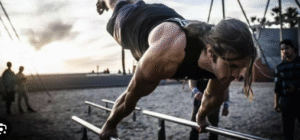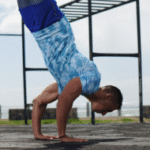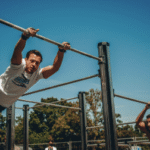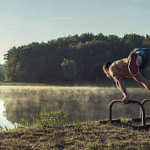Handstand for wrist pain
Wrist pain is a common issue for anyone training handstands, especially for beginners. The wrists are not accustomed to bearing the full weight of the body, and improper form or a lack of preparation can lead to discomfort, strain, and even injury. For handstand enthusiasts in Houston, understanding how to address and prevent wrist pain is crucial for a sustainable practice.
- The Root Cause: Lack of Mobility and Strength
Wrist pain during handstands is typically caused by two main factors:
- Poor Wrist Mobility: A handstand requires your wrists to be in a 90-degree angle of extension. If your wrist joints lack this range of motion, you’re forcing them into an uncomfortable position.
- Insufficient Strength: The muscles, tendons, and ligaments in your wrists are not yet conditioned to handle the load of your body weight.
- Immediate Action: Listen to Your Body and Take a Break
If you are experiencing wrist pain, the first and most important step is to stop the activity that is causing the pain . Pushing through pain can lead to serious injury and a much longer recovery time. While resting, you can focus on other handstand-related skills that don’t put pressure on your wrists, such as core work, shoulder flexibility, and leg drills.
- Wrist Preparation: The Key to Pain-Free Handstands
A comprehensive wrist routine is non-negotiable for handstand training. This routine should include both mobility and strengthening exercises.
Mobility Drills (Warm-Up)
These exercises prepare your wrists for the load. Do them before every handstand session.
Wrist Circles: Get on your hands and knees. Place your palms on the floor and gently make circular motions with your wrists, both clockwise and counter-clockwise.
Wrist Extensions: From a kneeling position on your hands and knees, turn your hands so your fingers point towards your knees. Gently lean back, feeling a stretch in your forearms and wrists.
Fingertip Push-ups: From a push-up position, lift your palms off the floor and support your weight on your fingertips. This builds strength in your fingers and forearms, which helps you “grip” the floor and take pressure off your wrist joint.
Strengthening Drills
These exercises build the long-term strength and resilience of your wrists.
Wrist Push-ups: From a kneeling push-up position, lift and lower your palms off the ground, using just the strength of your wrists and forearms. You can also do this in a full plank or push-up position as you get stronger.
First Knuckle Raises: Place your palms flat on the floor, fingers spread wide. Slowly lift your palms and the base of your knuckles off the floor, keeping your fingers on the ground. This builds the specific strength needed to adjust your balance in a handstand.
Use of Parallettes: Parallettes are an excellent tool for handstand training. They put your wrists in a neutral position, taking away the 90-degree angle of extension and drastically reducing the stress on your wrist joints. Many gymnasts and calisthenics athletes use them for this reason.
- Adjusting Your Handstand Practice
While your wrists are recovering, you can make changes to your training to keep progressing without putting them at risk.
Practice on a Decline: Use a sloped surface or place a block under the heels of your hands. This reduces the angle of wrist extension and the pressure on the joint.
Focus on a Freestanding Handstand: If you have wrist pain, you can practice the handstand on the wall, but with more emphasis on engaging your core and shifting your body weight to find your balance. You can try to lift your feet an inch off the wall for a second or two.
Lower Body Work: There are plenty of other areas of the body to work on for handstands that won’t strain your wrists, such as core compression (L-sits) and hamstring flexibility (pike stretches).
Seeking Professional Help in Houston
If your wrist pain persists, it is highly recommended to seek professional advice. A physical therapist or a doctor can diagnose the underlying issue and provide a tailored rehab program. Many physical therapy clinics in Houston specialize in sports injuries and can offer a personalized plan to get you back to your handstand practice safely.
Remember, a strong and healthy body is a long-term project. By addressing wrist pain proactively and building a solid foundation of mobility and strength, you’ll ensure that your handstand journey is safe, effective, and sustainable.

Handstand for wrist pain
Route
Calisthenics Gym Houston Functional Bodyweight Training
Secondary phone: (346) 483-3195
Email: info@calisthenicsclubhouston.com
URL: https://calisthenicsclubhouston.com/
Monday 6:00 AM - 7:00 PM Tuesday 6:00 AM - 7:00 PM Wednesday 6:00 AM - 7:00 PM Open now Thursday 6:00 AM - 7:00 PM Friday 12:00 PM - 6:30 PM Saturday 9:45 AM - 12:00 PM Sunday 3:00 PM - 5:00 PM





